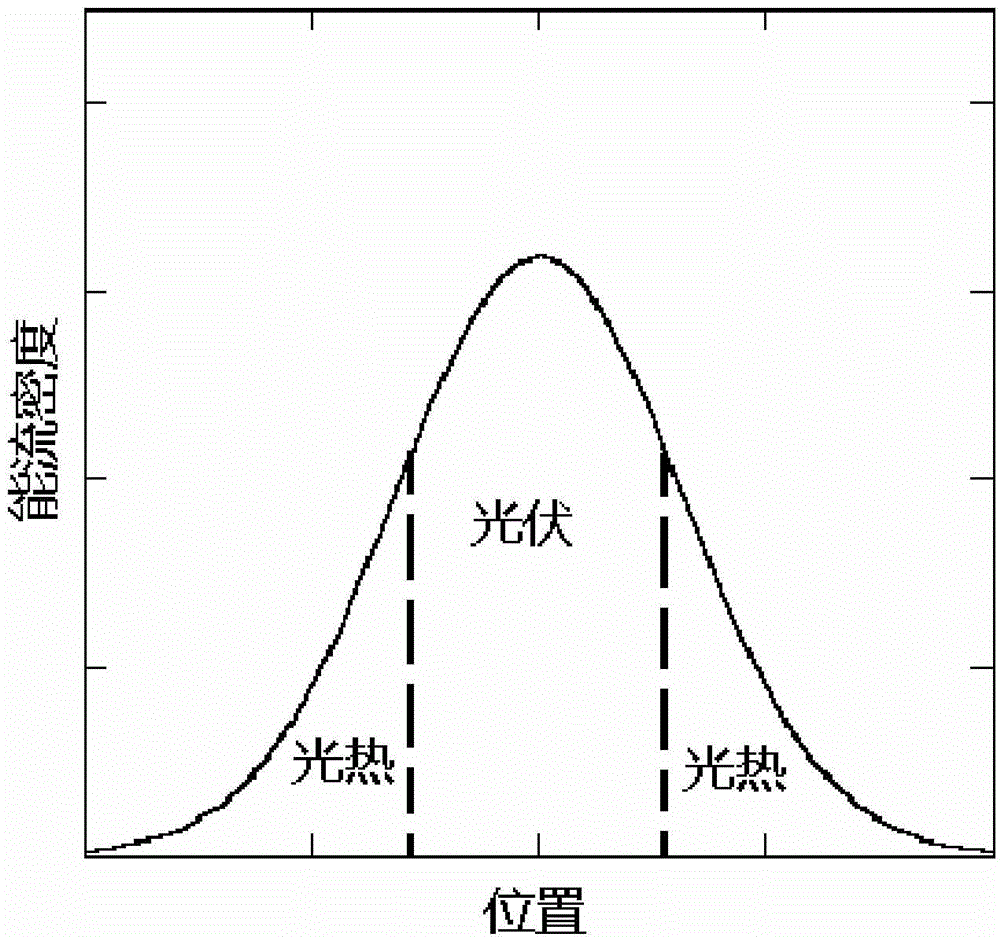Concentrating photovoltaic and photo-thermal composite power generation system
A power generation system and concentrating photovoltaic technology, applied in the field of solar energy utilization, can solve the problem of ineffective utilization of the waste heat of photovoltaic power generation, and achieve the effects of improving system efficiency and economy, reducing energy loss, and alleviating the problem of peak regulation
- Summary
- Abstract
- Description
- Claims
- Application Information
AI Technical Summary
Problems solved by technology
Method used
Image
Examples
Embodiment 1
[0044] see figure 1 As shown, a concentrating photovoltaic photothermal composite power generation system based on dense array cells includes a tracking concentrating system composed of heliostat 1 and receiving tower 2, a photovoltaic photothermal module and its thermal cycle part. The photovoltaic photothermal module also includes a dense array battery module 4, a heat absorber module 3 and their insulation layer 36, a connecting circuit and a supporting structure, and the heat absorber module 3 is arranged on the periphery of the dense array battery module 4 to adapt to solar energy concentration. Spot energy flux density distribution behind the light (see image 3 shown), match the part with higher energy flux density in the center of the spot with the surface of the dense array battery module 4, and match the part with lower energy flux density at the edge of the spot with the surface of the heat sink module 3. see figure 2 As shown, an insulating layer 36 is arranged ...
Embodiment 2
[0055] The shapes of the heat absorber module 3 and the dense array battery module 4 of this embodiment are different from those of the first embodiment, and the other system components and connection methods are the same as those of the first embodiment.
[0056] see Figure 11 As shown, in this embodiment, the photovoltaic photothermal module is arranged in a circular shape according to the characteristics of the light spot, wherein the annular heat absorber module 3 arranged outside is composed of a circular row of pipes 37 wound into a circle, and between the row of pipes It can be connected in series or in parallel; the dense array battery module 4 is composed of a circular CPV sub-module 47 and a plurality of fan-shaped CPV sub-modules 46 .
Embodiment 3
[0058] see Figure 12As shown, in this embodiment, the photovoltaic photothermal module includes a dense array battery module 4 and a heat absorber module 3 , and the heat absorber module 3 is arranged on the periphery of the dense array battery module 4 . There is also a secondary concentrator (SC) 11 arranged around the photovoltaic photothermal module. The secondary concentrator 11 collects and projects the energy in the area with a low spot energy flux density on the photovoltaic photothermal module. Its shape can be composite Parabolic light funnel and conical light funnel, etc. An SC cooling tube bundle 12 is also installed outside the secondary concentrator 11 to prevent the surface temperature of the secondary concentrator 11 from being too high. The cooling medium flows into the dense array battery module 4 from the inlet main pipe 42 of the CPV cooling system. After cooling the battery array, it is heated and flows out from the outlet main pipe 43 of the CPV cooling...
PUM
 Login to View More
Login to View More Abstract
Description
Claims
Application Information
 Login to View More
Login to View More - R&D
- Intellectual Property
- Life Sciences
- Materials
- Tech Scout
- Unparalleled Data Quality
- Higher Quality Content
- 60% Fewer Hallucinations
Browse by: Latest US Patents, China's latest patents, Technical Efficacy Thesaurus, Application Domain, Technology Topic, Popular Technical Reports.
© 2025 PatSnap. All rights reserved.Legal|Privacy policy|Modern Slavery Act Transparency Statement|Sitemap|About US| Contact US: help@patsnap.com



